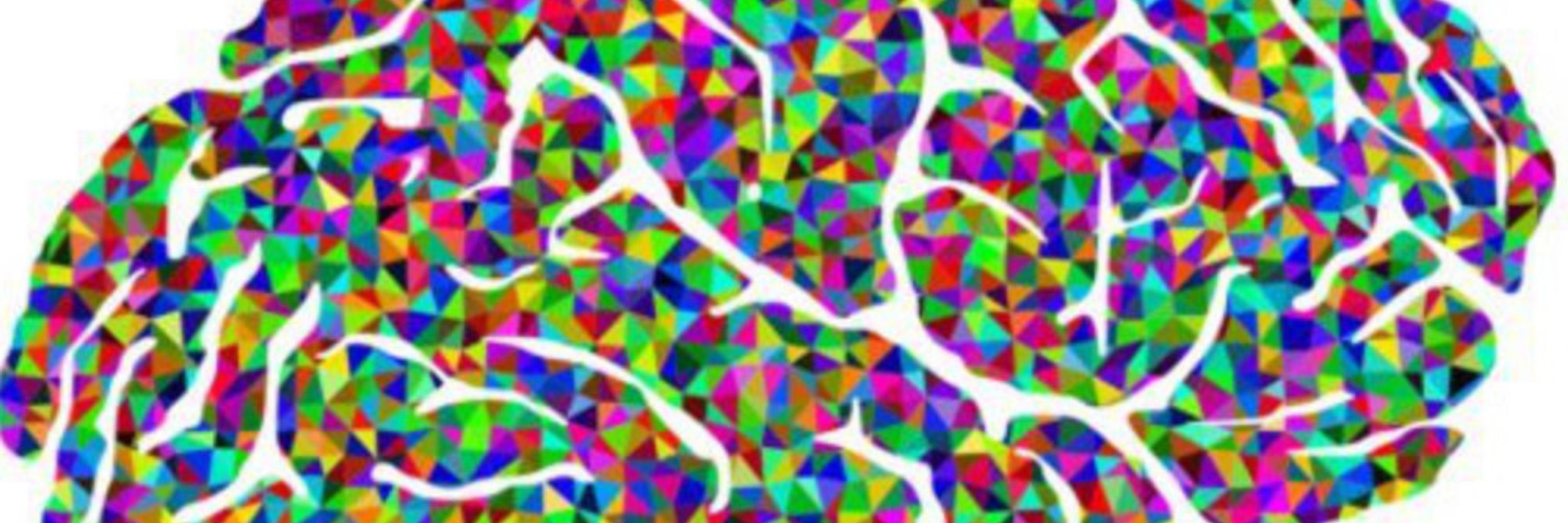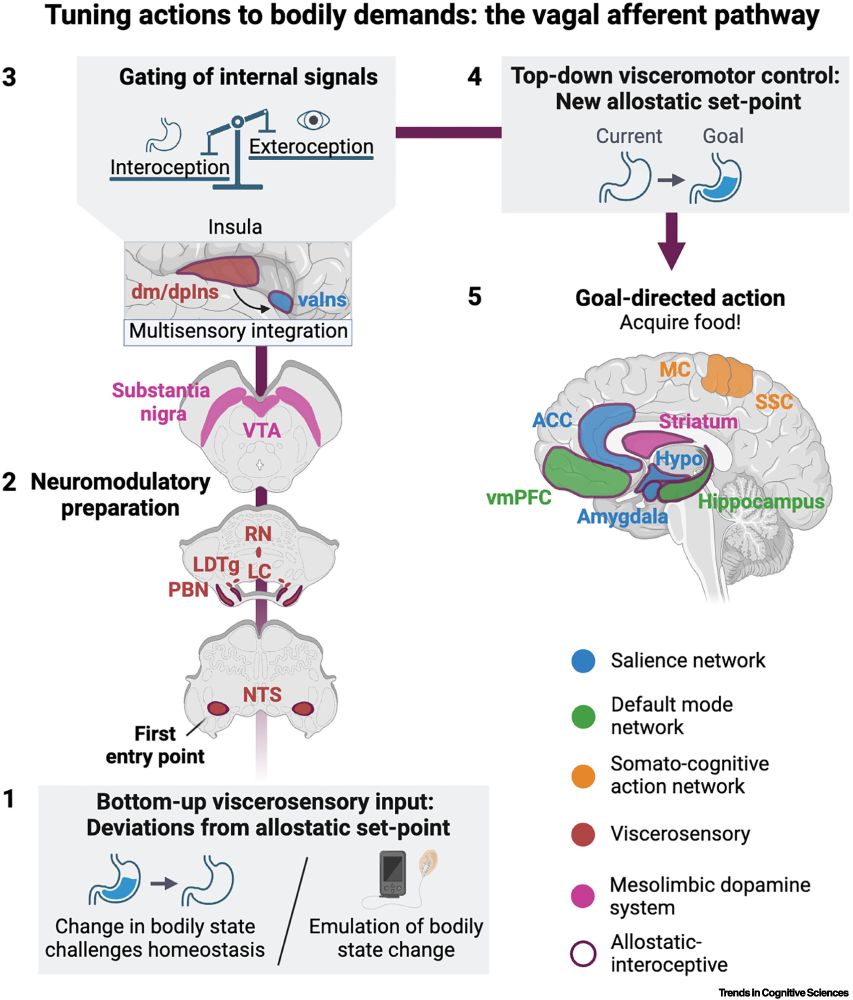
Vanessa Teckentrup
@glassybrain.bsky.social
Neuroscience/Psychology · IRC GOIPD Holder · Digital Mental Health · Smartphone Science · Brain Stimulation · Brain-Body Communication
Happy to say that our overview of how to modify your taVNS setup for safe use in the MR scanner is now published!
dx.doi.org/10.1111/jon....
There are more details in the thread below but next to lower temperatures 🌡️, we also saw better signal-to-noise ratio with the modification 📶 #neuroskyence
dx.doi.org/10.1111/jon....
There are more details in the thread below but next to lower temperatures 🌡️, we also saw better signal-to-noise ratio with the modification 📶 #neuroskyence

November 7, 2025 at 3:22 PM
Happy to say that our overview of how to modify your taVNS setup for safe use in the MR scanner is now published!
dx.doi.org/10.1111/jon....
There are more details in the thread below but next to lower temperatures 🌡️, we also saw better signal-to-noise ratio with the modification 📶 #neuroskyence
dx.doi.org/10.1111/jon....
There are more details in the thread below but next to lower temperatures 🌡️, we also saw better signal-to-noise ratio with the modification 📶 #neuroskyence
You happen to be at #CPConf2025 and interested in habitual processes and how they contribute to compulsivity? We've gathered data from 180 individuals across three different compulsion types including phone-checking (not reflected in the DSM!). Come visit me at poster 2.46!

July 15, 2025 at 1:21 PM
You happen to be at #CPConf2025 and interested in habitual processes and how they contribute to compulsivity? We've gathered data from 180 individuals across three different compulsion types including phone-checking (not reflected in the DSM!). Come visit me at poster 2.46!
…and we didn’t see substantial evidence for the reverse direction.

June 19, 2025 at 11:18 AM
…and we didn’t see substantial evidence for the reverse direction.
Next, we looked at directional effects and saw that increases in negative mood were linked to slower responding at the next assessment in 27 out of the 37 items (filled shapes). Feelings of worry and anxiety had the biggest effect on future cognition across all three datasets.

June 19, 2025 at 11:18 AM
Next, we looked at directional effects and saw that increases in negative mood were linked to slower responding at the next assessment in 27 out of the 37 items (filled shapes). Feelings of worry and anxiety had the biggest effect on future cognition across all three datasets.
On the within-person level, people were slower to respond when their negative mood increased for 34 out of the 37 items assessed (blue shapes). As expected, this association was even stronger on the between-person level (purple shapes).

June 19, 2025 at 11:18 AM
On the within-person level, people were slower to respond when their negative mood increased for 34 out of the 37 items assessed (blue shapes). As expected, this association was even stronger on the between-person level (purple shapes).
We used ecological momentary assessment (EMA) to measure mood and Digital Questionnaire Response Time (DQRT), our recently validated proxy to measure cognitive processing speed from response times to survey items, across three datasets (total N=914) with different response formats.

June 19, 2025 at 11:18 AM
We used ecological momentary assessment (EMA) to measure mood and Digital Questionnaire Response Time (DQRT), our recently validated proxy to measure cognitive processing speed from response times to survey items, across three datasets (total N=914) with different response formats.
…and we didn’t see substantial evidence for the reverse direction.

June 19, 2025 at 10:53 AM
…and we didn’t see substantial evidence for the reverse direction.
Next, we looked at directional effects and saw that increases in negative mood were linked to slower responding at the next assessment in 27 out of the 37 items (filled shapes). Feelings of worry and anxiety had the biggest effect on future cognition across all three datasets.

June 19, 2025 at 10:53 AM
Next, we looked at directional effects and saw that increases in negative mood were linked to slower responding at the next assessment in 27 out of the 37 items (filled shapes). Feelings of worry and anxiety had the biggest effect on future cognition across all three datasets.
On the within-person level, people were slower to respond when their negative mood increased for 34 out of the 37 items assessed (blue shapes). As expected, this association was even stronger on the between-person level (purple shapes).

June 19, 2025 at 10:53 AM
On the within-person level, people were slower to respond when their negative mood increased for 34 out of the 37 items assessed (blue shapes). As expected, this association was even stronger on the between-person level (purple shapes).
We used ecological momentary assessment (EMA) to measure mood and Digital Questionnaire Response Time (DQRT), our recently validated proxy to measure cognitive processing speed from response times to survey items, across three datasets (total N=914) with different response formats.

June 19, 2025 at 10:53 AM
We used ecological momentary assessment (EMA) to measure mood and Digital Questionnaire Response Time (DQRT), our recently validated proxy to measure cognitive processing speed from response times to survey items, across three datasets (total N=914) with different response formats.
The modification rather attenuates distortions that are visible in target regions for taVNS (such as mid- and hind-brain areas) when using an unmodified cable.

April 4, 2025 at 11:46 AM
The modification rather attenuates distortions that are visible in target regions for taVNS (such as mid- and hind-brain areas) when using an unmodified cable.
Even when applying the maximum possible (based on our device) stimulation strength of 5 mA, using a stimulator cable equipped with FCTs resulted in a temperature increase below 2 K (in line with the ASTM F2182 standard).

April 4, 2025 at 11:46 AM
Even when applying the maximum possible (based on our device) stimulation strength of 5 mA, using a stimulator cable equipped with FCTs resulted in a temperature increase below 2 K (in line with the ASTM F2182 standard).
🧯 We added floating ground cable traps (FCT) to the stimulator cables to reduce the induction of RF currents (thus, heating) along the cable, and report temperature and artifact measurements in phantoms and humans. The result?

April 4, 2025 at 11:46 AM
🧯 We added floating ground cable traps (FCT) to the stimulator cables to reduce the induction of RF currents (thus, heating) along the cable, and report temperature and artifact measurements in phantoms and humans. The result?
Lots of love and appreciation for the hot-takes session at
#SAA2024. What a great idea to present ideas challenging predominant views and have the audience vote and comment on them 👌
#SAA2024. What a great idea to present ideas challenging predominant views and have the audience vote and comment on them 👌

June 4, 2024 at 5:04 PM
Lots of love and appreciation for the hot-takes session at
#SAA2024. What a great idea to present ideas challenging predominant views and have the audience vote and comment on them 👌
#SAA2024. What a great idea to present ideas challenging predominant views and have the audience vote and comment on them 👌
🔍We investigated this by calculating the association between total scores and scale-specific DQRT (point estimates below) and deriving DQRT from the same number of items randomly sampled from each scale EXCEPT the one in question (distributions below). 12/17

March 25, 2024 at 1:09 PM
🔍We investigated this by calculating the association between total scores and scale-specific DQRT (point estimates below) and deriving DQRT from the same number of items randomly sampled from each scale EXCEPT the one in question (distributions below). 12/17
So far, this is very neat! Do we also pick up on the same aspects of brain health as the trail making test? Indeed, slower DQRT was linked to various individual difference measures. 10/17

March 25, 2024 at 1:08 PM
So far, this is very neat! Do we also pick up on the same aspects of brain health as the trail making test? Indeed, slower DQRT was linked to various individual difference measures. 10/17
Using repeatedly assessed EMA items, we found moderate reliability (lower than for cognitive flexibility itself, but with overlapping confidence intervals). However: watch out for practice effects that affect both DQRT and cognitive flexibility! 9/17

March 25, 2024 at 1:07 PM
Using repeatedly assessed EMA items, we found moderate reliability (lower than for cognitive flexibility itself, but with overlapping confidence intervals). However: watch out for practice effects that affect both DQRT and cognitive flexibility! 9/17
OK, what about reliability? We found it to be good for questionnaire items even when DQRT was calculated from two different survey sets and with increasing time lag between the two assessments. 8/17

March 25, 2024 at 1:07 PM
OK, what about reliability? We found it to be good for questionnaire items even when DQRT was calculated from two different survey sets and with increasing time lag between the two assessments. 8/17
Our biggest survey set had 209 items. Do we need all of them? 😱 No worries! 22 items are fine. That’s 95% of the asymptote given by an exp. function fitted to the curve below (red line). In fact, you only get a 12.5% increase in signal going from 22 to the full 209 items. 7/17

March 25, 2024 at 1:06 PM
Our biggest survey set had 209 items. Do we need all of them? 😱 No worries! 22 items are fine. That’s 95% of the asymptote given by an exp. function fitted to the curve below (red line). In fact, you only get a 12.5% increase in signal going from 22 to the full 209 items. 7/17
Using this new cut-off, we found good consistency in the link between cognition and DQRT across our samples using not only common questionnaire items but also ecological momentary assessments (EMA). 6/17

March 25, 2024 at 1:01 PM
Using this new cut-off, we found good consistency in the link between cognition and DQRT across our samples using not only common questionnaire items but also ecological momentary assessments (EMA). 6/17
Now, how to best quantify DQRT? With remote surveys, people can get distracted, so we need cut-offs to maximize the signal. We tried a bunch of lower and upper cut-offs using bootstrapping in a training subset to maximize the link between DQRT and cognitive flexibility. 5/17

March 25, 2024 at 1:01 PM
Now, how to best quantify DQRT? With remote surveys, people can get distracted, so we need cut-offs to maximize the signal. We tried a bunch of lower and upper cut-offs using bootstrapping in a training subset to maximize the link between DQRT and cognitive flexibility. 5/17
What aspects of cognition does DQRT map onto? Strongest links were observed for a speed-based measure – cognitive flexibility – derived from the trail making task, but also to working memory, but not model-based planning. 4/17

March 25, 2024 at 1:00 PM
What aspects of cognition does DQRT map onto? Strongest links were observed for a speed-based measure – cognitive flexibility – derived from the trail making task, but also to working memory, but not model-based planning. 4/17
We conducted a comprehensive validation of what we call the ‘digital questionnaire response time’ (DQRT) using data from N=2979 users of the Neureka app. 3/17

March 25, 2024 at 1:00 PM
We conducted a comprehensive validation of what we call the ‘digital questionnaire response time’ (DQRT) using data from N=2979 users of the Neureka app. 3/17
An extensive network of vagal sensory neurons transmit interoceptive information from peripheral organs to the brainstem. And the target brain networks are just as extensive, orchestrating sensory, metabolic, affective, cognitive, and motor processing 🤯

December 1, 2023 at 12:56 PM
An extensive network of vagal sensory neurons transmit interoceptive information from peripheral organs to the brainstem. And the target brain networks are just as extensive, orchestrating sensory, metabolic, affective, cognitive, and motor processing 🤯

